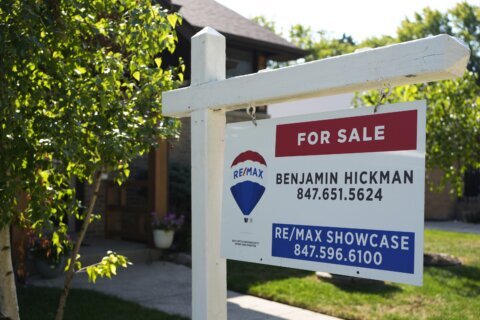Where you choose to live affects just about every aspect of your life, from the type of job you can get (and the amount of money you can earn) to the quality of education and health care you and your family can receive. U.S. News took all of this into account when calculating the second-annual ranking of the Best Places to Live in the U.S., which evaluates the 100 most populous metro areas in the country based on qualities that Americans care about most, including affordability, employment opportunities and the overall quality of life in each place.
Many of us have dreamed of living near the beach in Honolulu or amid the towering skyscrapers of New York City. But wanting to live somewhere doesn’t necessarily make it an ideal place to settle down. And just because you never thought about living in a particular place doesn’t mean it shouldn’t be on your radar.
The following three metro areas didn’t make the top 10 this year, but their significant year-over-year improvements on the ranking are a sign that they may be the next great place to live.
Syracuse, New York
— 2016 Rank: 53
— 2017 Rank: 28
Those who aren’t from New York often forget that the Empire State doesn’t begin and end in New York City. About 250 miles northwest of the Big Apple is Syracuse, which rose 25 spots in the 2017 rankings to the No. 28 spot due to its stable economy. This central New York metro area has experienced steady job growth over the past several years, and according to the Bureau of Labor Statistics, the area saw a year-over-year increase in median annual salary from $55,580 in 2015 to $56,870 in 2016 — making housing costs even more manageable.
[Read: 100 Best Places to Live in the U.S.]
“Central New York’s economy has a diverse and strong base of industries. This diversity provides a buffer to the shifts of the national and global economy,” says Robert Simpson, president and CEO of the area’s chamber of commerce, CenterState CEO. “Our region tends to have a strong but steady economy, therefore our housing also stays strong but doesn’t swing high and low.”
According to Simpson, Syracuse’s stable job market can also be attributed to its location. At the heart of the metro area, Interstate 81, which runs north to south from the Canadian border to central Tennessee, intersects Interstate 90, which runs east to west across the country. “[W]e are strategically located at the crossroads of the northeast, with a border shared by Canada, [so] the region provides easy access to major markets,” he says.
Given its proximity to Lake Ontario, Syracuse experiences frigid winters with plenty of snowfall, but residents aren’t phased.
“You can have a vibrant community in a cold climate,” Simpson says. “Snow and winter doesn’t slow us down or stop us the way it might in other places. We have the infrastructure and capacity to move snow and keep going. Winter offers a change of recreation options, and residents get out and enjoy activities like skiing, snowshoeing, and snowmobiling.”
Hartford, Connecticut
— 2016 Rank: 59
— 2017 Rank: 31
Hartford jumped 28 spots to take the No. 31 position in the 2017 Best Places to Live ranking. The most recent U.S. Census population estimates show the metro area is attracting new residents, which is reflected by Hartford’s higher Net Migration score. The reason why is simple: jobs.
[Read: Are the Best Places to Live the Best Markets to Buy a Home?]
“The Hartford region has seen some strong employment growth in a number of high-productivity sectors, including professional, technical services, education and health services,” says Alissa DeJonge, vice president of research at the Connecticut Economic Resource Center.
What’s more, the types of job opportunities that are available in the Hartford area tend to pay well, with residents earning nearly $57,000 per year on average, which is significantly more than the average American’s salary of $48,320 per year. United Technologies Corp. provides employment to residents in the manufacturing and engineering sectors, and the region is home to some of the country’s largest financial institutions, including Aetna Inc. and the Hartford Financial Services Group.
“Hartford is known as the ‘insurance capital’ of the U.S., a title substantiated with Connecticut ranking No. 1 in the U.S. for insurance employment per capita, with many of those employers located in the Hartford region,” says Susan Winkler, executive director of Connecticut Insurance and Financial Services. “Connecticut is also home to the highest concentration of actuaries — many located in the Hartford region.”
But Hartford is hardly all work and no play. The metro area features a diverse selection of restaurants and cultural attractions. According to Paul Pita, CEO and executive creative director of Hartford-based digital marketing firm The Pita Group, “Hartford is a great place to live because residents have access to what they need: great options for housing, great educational options and a wide variety of lifestyle options for food, arts, culture, entertainment and outdoor activities.”
Milwaukee
— 2016 Rank: 72
— 2017 Rank: 47
Like Syracuse, Milwaukee sees winters that aren’t for the faint of heart, and it, too, climbed 25 places to crack the top 50 on the 2017 list of the Best Places to Live. In addition to offering residents a more reasonable cost of living than its neighboring metro area to the south, Chicago, Milwaukee saw an increase in its Quality of Life score, which measures the area’s crime rate, commute time, quality of education and health care, and overall resident well-being, as measured by the Gallup-Healthways Well-Being Index.
[See: The 25 Most Desirable Places to Live.]
“Milwaukee has a strong combination of quality-of-life amenities, including a respected symphony orchestra, a ballet company, a renowned art museum, Major League Baseball along with NBA basketball, an annual music festival that is among the world’s largest, big ethnic and cultural festivals, a top-notch zoo, a beautiful park system, miles of river walks through the downtown area, and natural resources including a long, publicly accessible Lake Michigan shoreline,” says Milwaukee Mayor Tom Barrett.
Milwaukee fosters a thriving artistic community anchored by institutions like the Milwaukee Art Museum and the Milwaukee Institute of Art & Design. And locals are proud of the metro area’s prominent beer scene. Additionally, the downtown area is experiencing new development, from a new streetcar line to a new NBA stadium.
“With $3.4 billion in private and public development completed in the past decade, another $1.7 [billion] under construction and $930 [million] in the pipeline today, we are transforming the work, live and play landscape across downtown,” says Tim Sheehy, president of the Metropolitan Milwaukee Association of Commerce.
The metro area also has a strong and stable economy with numerous opportunities in the manufacturing sector at companies like Harley-Davidson and GE Healthcare. “Milwaukee’s economy is diversifying, too,” Barrett says. “Insurance, finance, health care, higher education and corporate headquarters for retail are all prominent in the local economy.”
More from U.S. News
The Best Places to Live in the U.S. in 2017
10 Best Places to Find a Job in Technology
10 Places Where People Earn the Highest Salaries
3 Up-and-Coming Places to Live originally appeared on usnews.com







